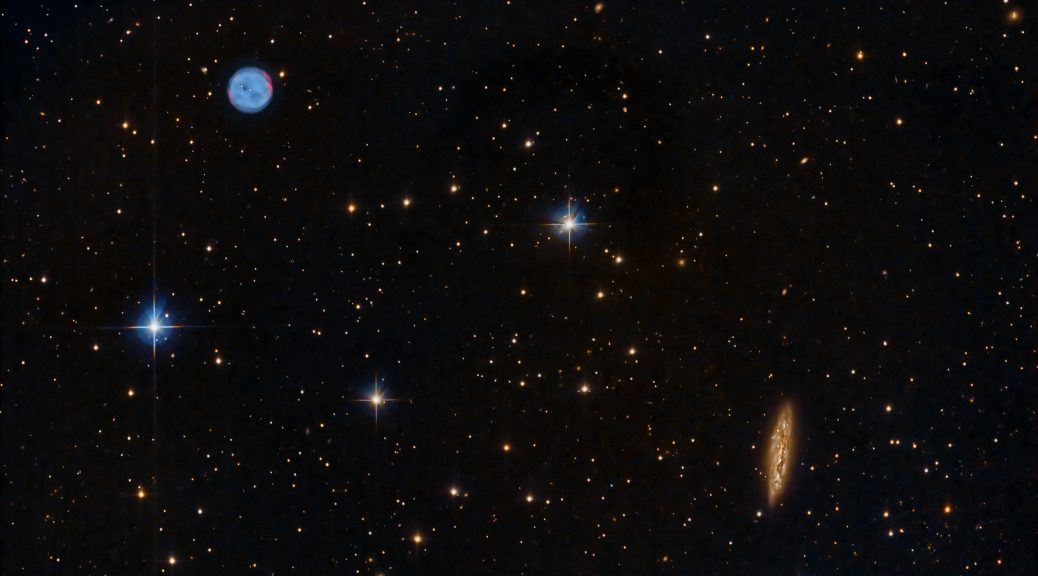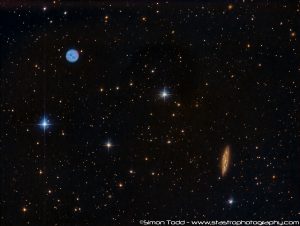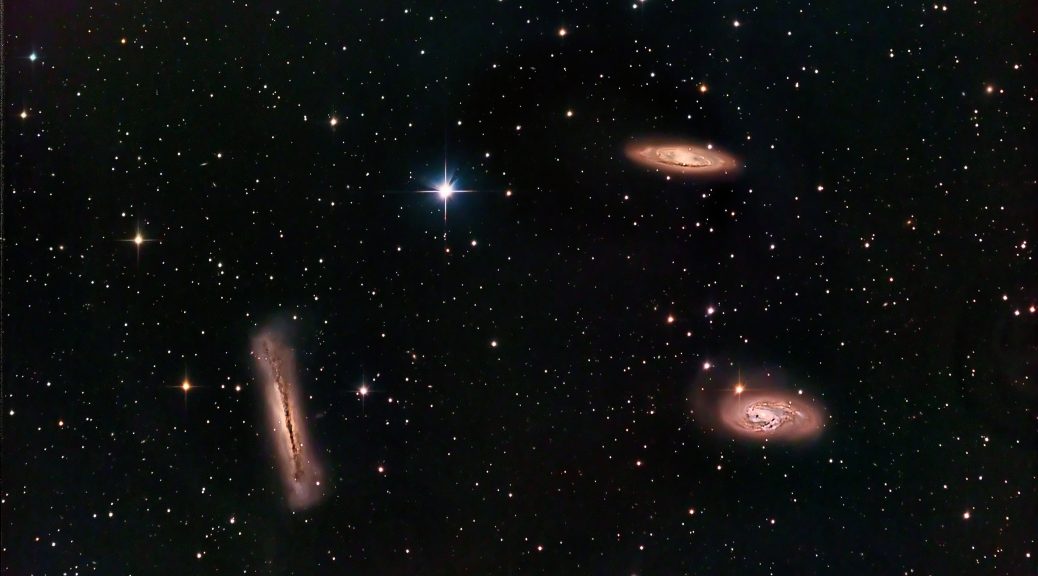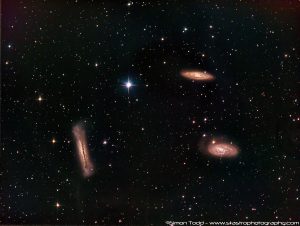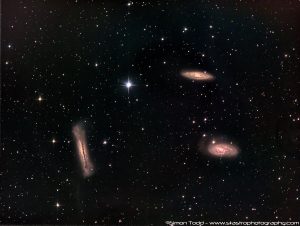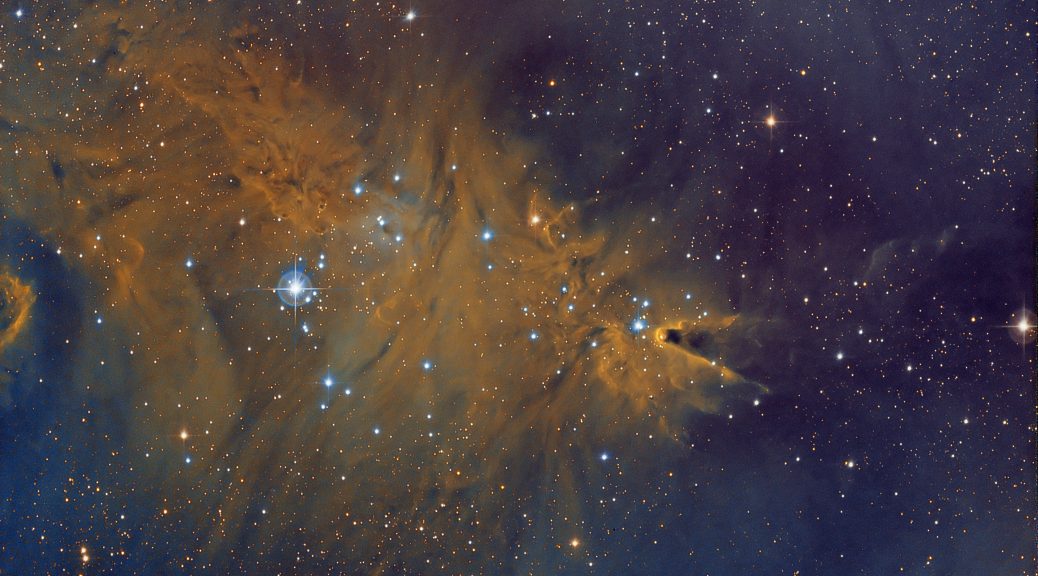M97 and M108
The Owl Nebula (also known as Messier 97, M97 or NGC 3587) is a planetary nebula located approximately 2,030 light years away in the constellation Ursa Major. It was discovered by French astronomer Pierre Méchain on February 16, 1781
Messier 108 (also known as NGC 3556) is a barred spiral galaxy in the constellation Ursa Major. It was discovered by Pierre Méchain in 1781 or 1782. From the perspective of the Earth, this galaxy is seen almost edge-on.
The image consists of the following
23x180S – Red
23x180S – Green
23x180S – Blue
25x180S – Luminance
25 Darks, 25 Flats and 25 BIAS frames have also been applied
Equipment Used:-
Imaging Scope: Sky-Watcher Quattro Series 8-CF F4 Imaging Newtonian
Flattener: Sky-Watcher Aplanatic Coma Corrector
Imaging Camera: Atik Cameras 383L+ Mono CCD -20C
Guide Scope: Celestron Telescopes C80ED Reftractor
Guide Camera: Qhyccd QHY5L-II
Mount: Sky-Watcher EQ8 Pro
Filterwheel: Starlight Xpress Ltd 7x36mm EFW
Filters: Baader Planetarium 36mm Unmounted LRGB
Image Capture: Main Sequence Software SGPro
Image Stacking: Maxim-DL
Image Processing: PixInsight

